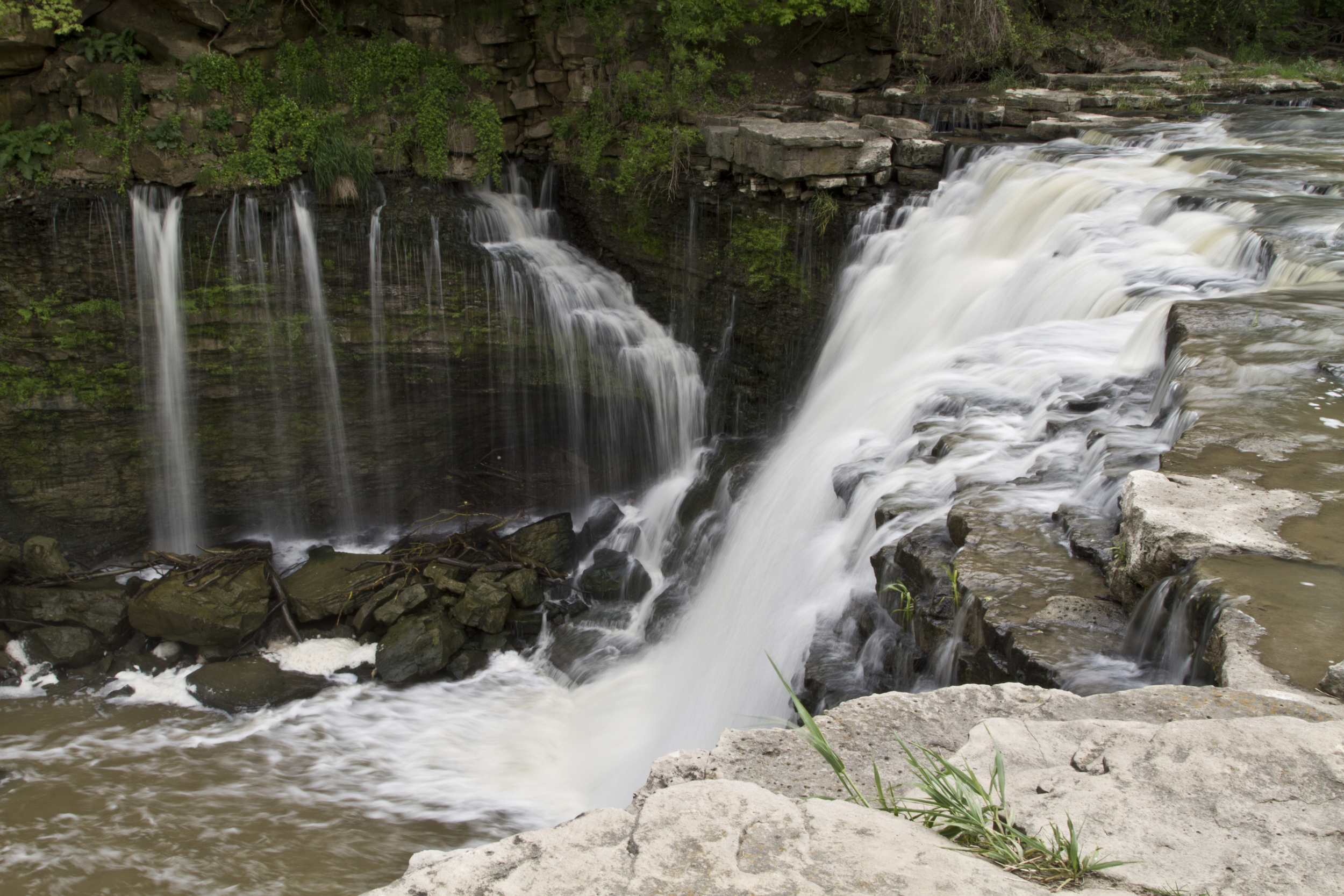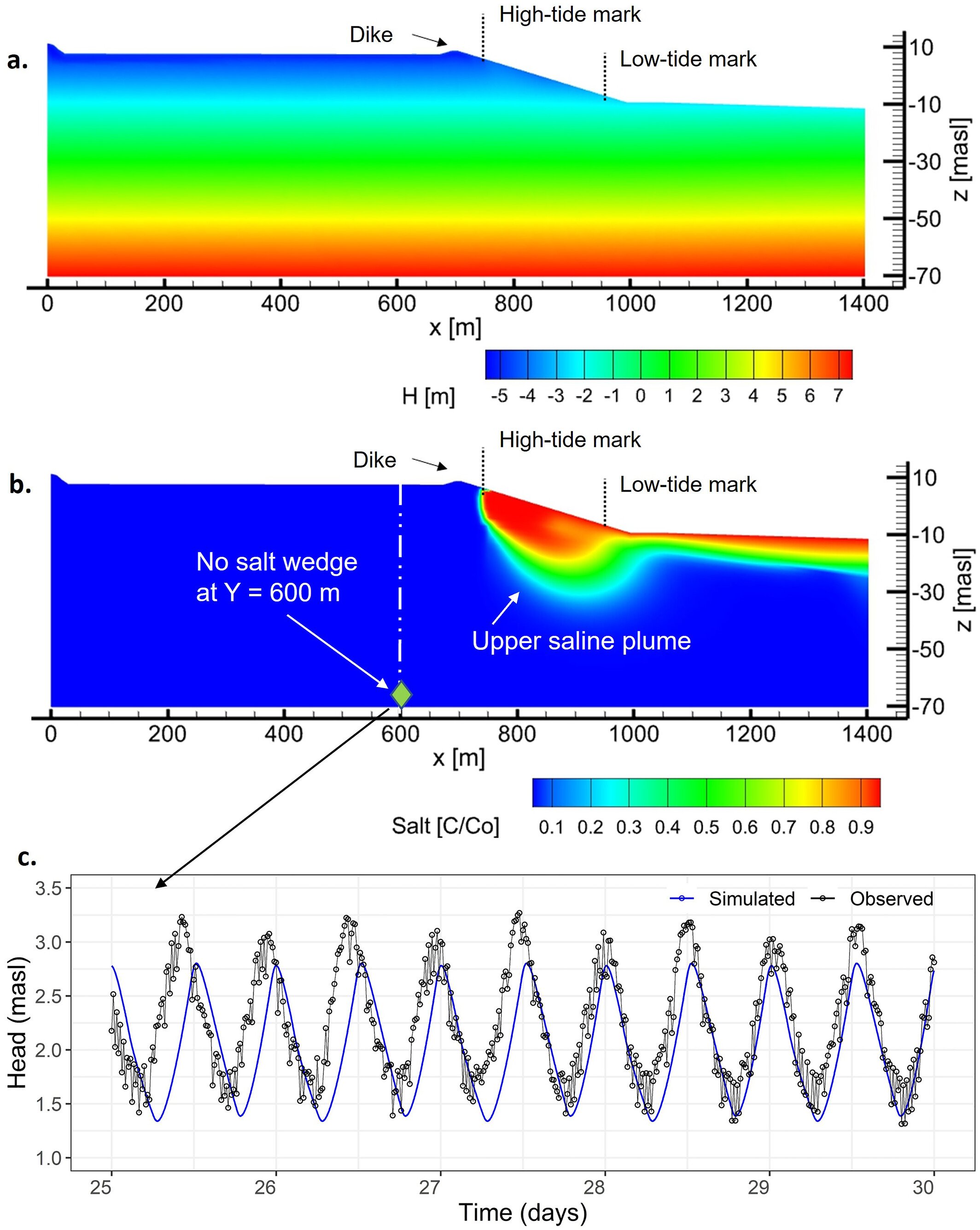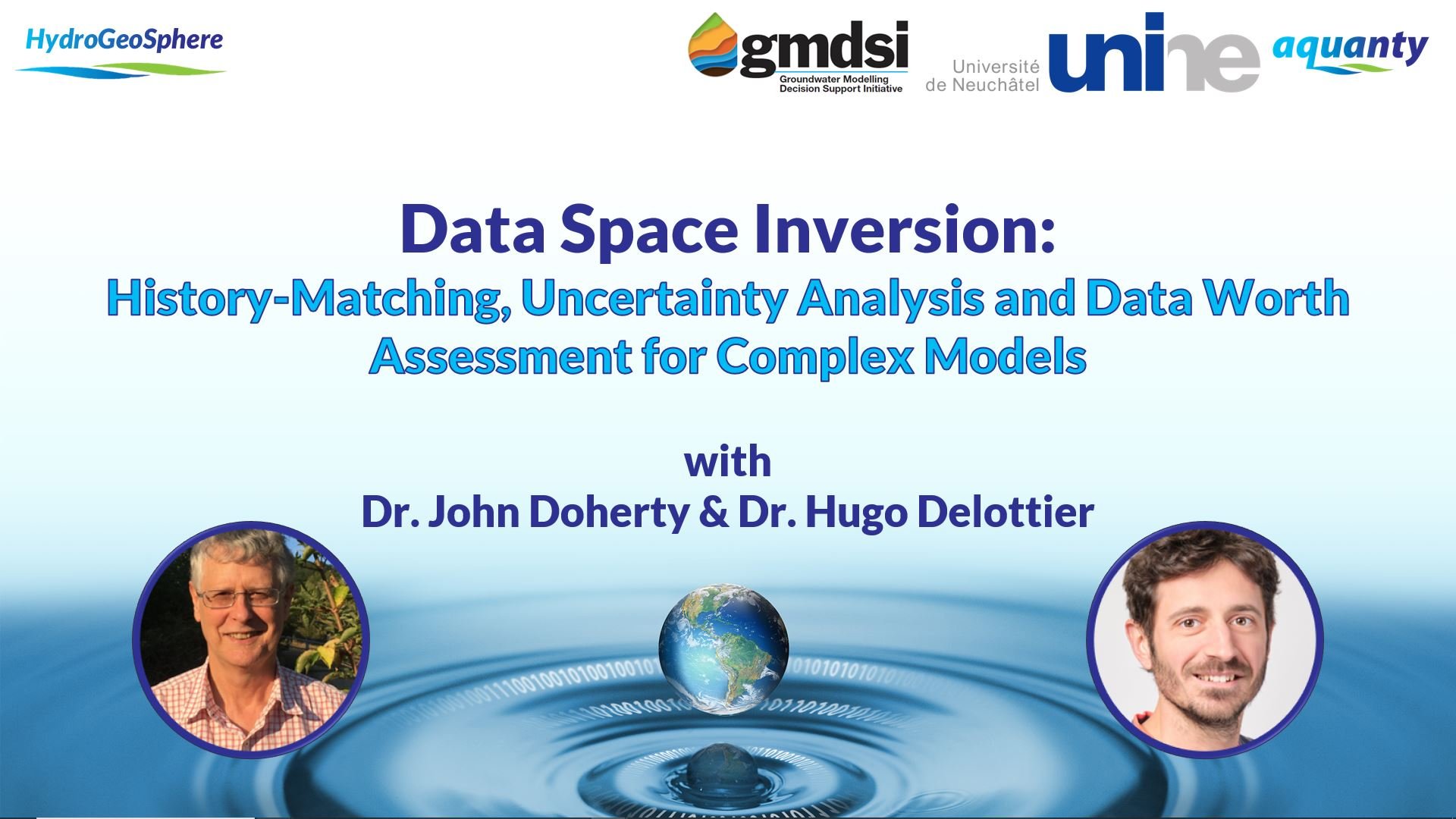

HGS RESEARCH HIGHLIGHT – Understanding the vulnerability of surface–groundwater interactions to climate change: insights from a Bavarian Forest headwater catchment
This study used HydroGeoSphere to evaluate the impact of climate change on streamflow and water availability within a small forested catchment in South-East Germany. Climate forecasts in the region predict a significant decrease in precipitation over the coming decades. Based on integrated hydrologic modelling of the catchment, this forecasted decline in precipitation combined with a relatively steady rate of evapotranspiration (compared to the historical period) will result in prolonged drought conditions, which in turn will result in declining groundwater levels, decreased baseflow to the upstream reaches of the stream network.

HGS RESEARCH HIGHLIGHT - Mega-Tidal and Surface Flooding Controls on Coastal Groundwater and Saltwater Intrusion Within Agricultural Dikelands
The study highlighted here makes full use of the density dependent flow modelling capabilities of HydroGeoSphere to investigate the impacts of climate change on groundwater-ocean interactions, and how sea-level rise, tides and storm-surges impact the long-term position of an upper saline plume in a coastal agricultural dikeland in Nova Scotia, Canada.

HGS RESEARCH HIGHLIGHT – Groundwater flow reversal between small water bodies and their adjoining aquifers: A numerical experiment
This recent study uses HydroGeoSphere to investigate groundwater-surface water interactions within “kettle holes” - post glacial landscape features prevalent across Northern Europe and Northern America. These kettle holes are quite similar to lakes, but their smaller size makes them prone to drying out, which results in very dynamic and variable groundwater-surface water interactions, sometimes being subject to groundwater flow reversal between a kettle hole and the adjacent aquifer.

HGS RESEARCH HIGHLIGHT – Evaluation of Hydraulic Conductivity Estimates from Various Approaches with Groundwater Flow Models
Over several decades a wide variety of techniques have been used to estimate the hydraulic flow properties of the subsurface. Here the authors have produced heterogeneous hydraulic conductivity (K) distributions at a heavily instrumented research site using 6 distinct techniques (slight variations in some tests resulted in 9 distinct K distributions):.

HydroGeoSphere Research Highlight - "Lateral and vertical saltwater intrusion into a coastal aquifer"
Climate change is projected to substantially increase the global mean sea level, which will adversely impact coastal communities worldwide.

HGS RESEARCH HIGHLIGHT – Managing climate change impacts on the Western Mountain Aquifer: Implications for Mediterranean karst groundwater resources
A new study investigates the impact of climate change on water availability within a 9000 sqkm karstic aquifer in Israel and the West Bank, and couples HydroGeoSphere to a soil-epikarst water balance model.

Staff Research Highlight - Comparative Valuation of Three Ecosystem Services in a Canadian Watershed Using Global, Regional, and Local Unit Values
This new study, authored by Dr. Tariq Aziz, aims to compare ecosystem services values derived from three different sources: locally derived unit values specific to the Grand River Watershed, unit values from a regional database, and unit values compiled in the global Ecosystem Services Valuation Database (ESVD).

HGS RESEARCH HIGHLIGHT – Effect of topographic slope on the export of nitrate in humid catchments: a 3D model study
Agricultural nutrient runoff refers to the movement of excess nutrients, such as nitrogen and phosphorus, from agricultural lands into water bodies such as rivers, lakes, and oceans. While nutrients are essential for plant growth, excessive runoff can have significant impacts on both human and ecosystem health.
